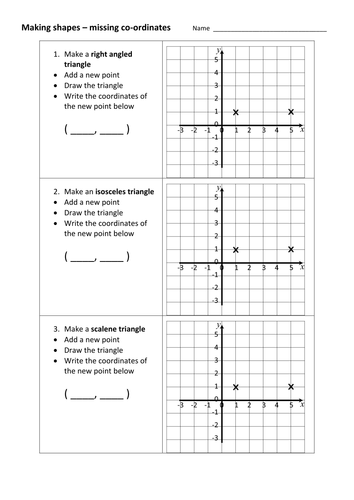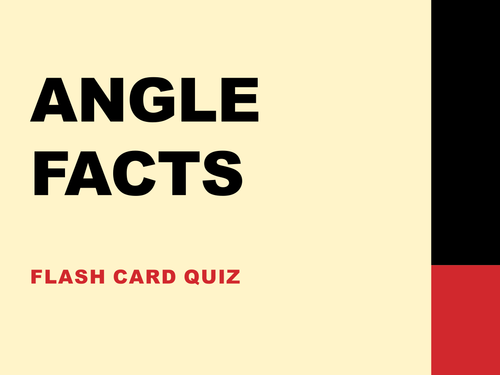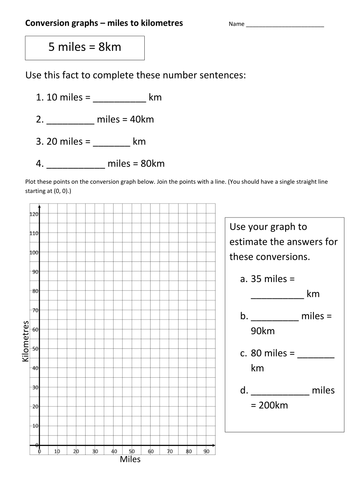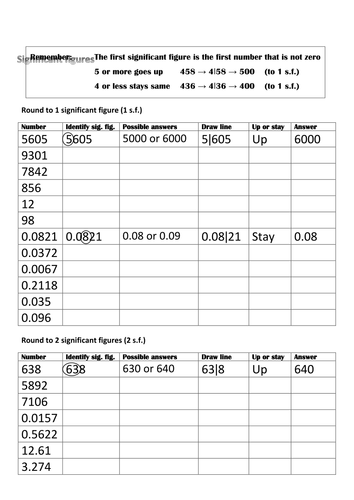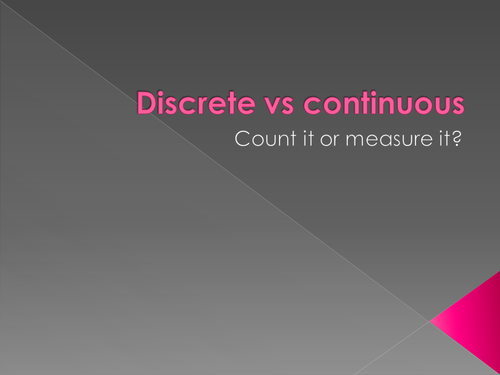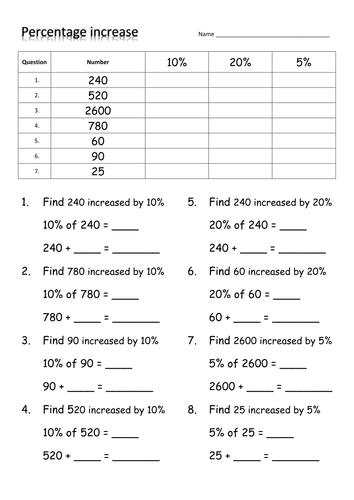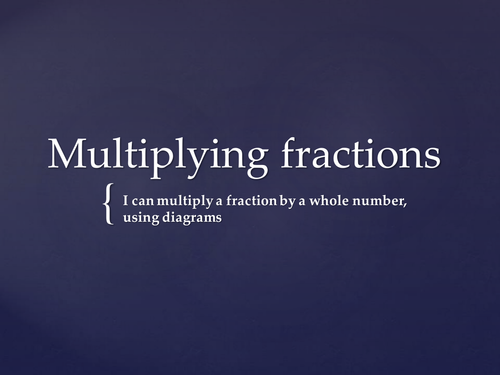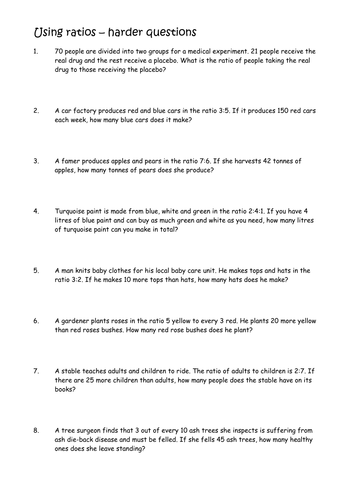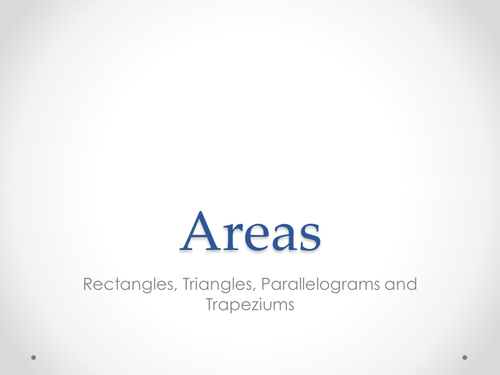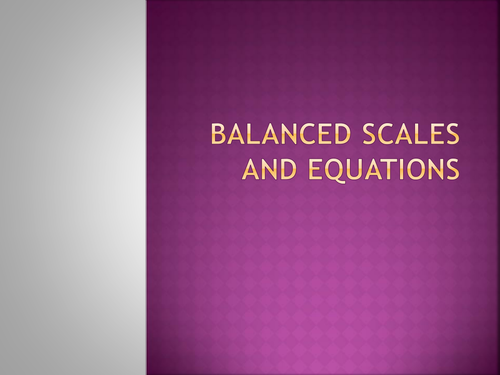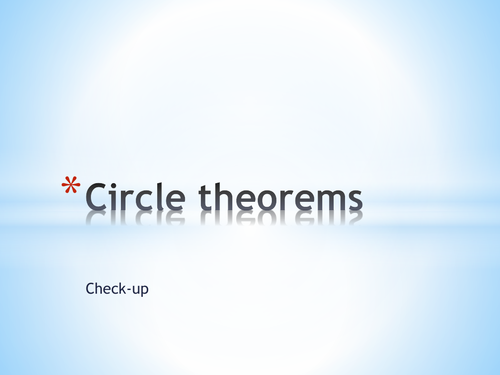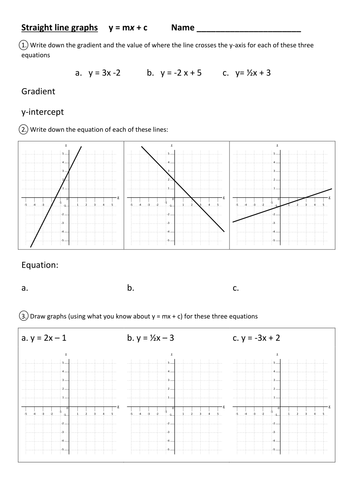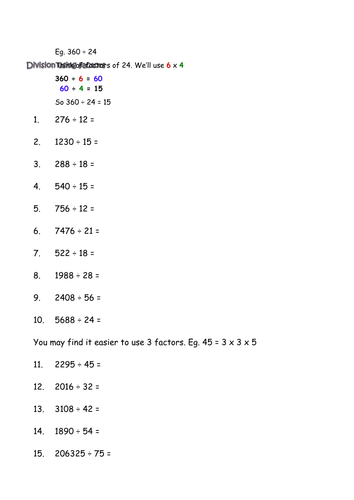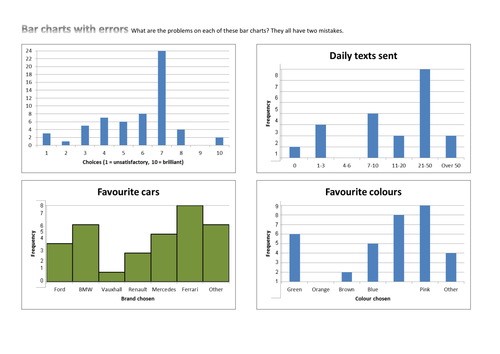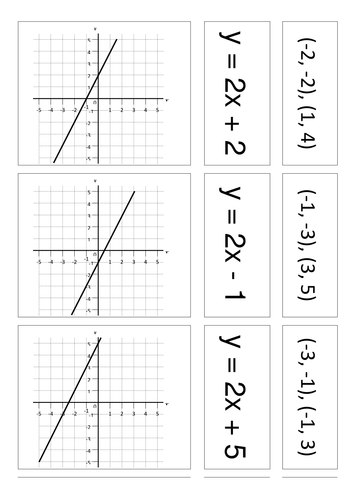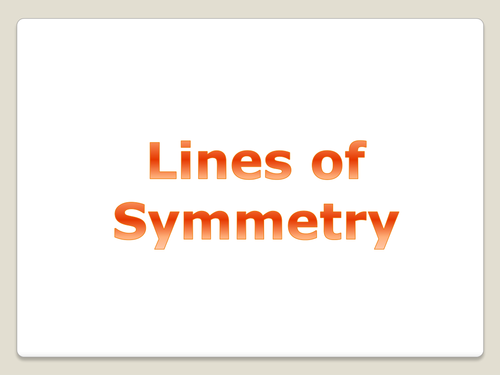
130Uploads
944k+Views
1089k+Downloads
Math

Make 2-D shapes from missing coordinates
Find the coordinates that creates the required shape - some of the problems have more than one answer. Others (assuming you use integer values and stay on the grid) do not. Various triangles, square, parallelogram, rhombus, trapezium.
Final page to identify given shapes - named, congruent, enlargement.

Parallel lines & angle facts quiz
20 quick questions on angles (largely) in parallel lines. Emphasis on use of correct terminology. Could be done on mini-whiteboards, or otherwise as quiz, rather than flashcards.

Draw and interpret conversion graph - miles to km
Scaffolded worksheet asking students to find 4 points, plot these on a conversion graph of miles to km and then use the line to convert 4 other values.
(10/2/14) Two further examples added. (12/7/16) Answers uploaded

Rounding - dec. places, sig figs and estimation
Structured worksheets on decimal places and significant figures. Plus similar style sheet (with less scaffolding) for estimating using 1 significant figure. (d.p. worksheet added 28/1/13)
(12/7/16) Answers uploaded

Types of data - discrete vs continuous
Qualitative vs quantitative, discrete vs continuous. 1. Cards to sort into two groups - may think of any way to split. 2. Flipchart to structure lesson with links to short videos etc. 3. PowerPoint quiz - identify whether discrete or continuous.

Percentage increase - scaffolded worksheet
First find 10, 20 and 5% of some numbers. Then questions using these values. Finally questions with other values and with guidance on how to get the correct amount. Could be calculator, but sums should be easy enough without.
[3/2/16 Second version added for pupils who need further practice. 12/7/16 Answers uploaded]

Perimeters of compound shapes with missing lengths
Various shapes (all but one rectilinear). All have missing lengths which need to be found. Two are in mixed units. Answers given in text box. (Delete before printing!)

Multiply fraction by a whole number
Visual demonstration/explanation of multiplying a fraction by a whole number using diagrams

Ratio - harder worded questions
8 questions. Includes questions where the key to the answer is in the "extra" parts (the difference between the two ratios).
(12/7/16) Answers uploaded

Perimeter of compound shapes
Presentation and worksheet for middle ability Y8 students. (50 minute lesson.) Could be extended for students to calculate area as well.

Mixed questions on area of basic shapes
Areas of rectangles, triangles, parallelograms and trapezia. Fairly straight-forward questions on area (or using area to find missing sides). Multichoice - so can be used with flash cards.

Metric conversions for area and volume
Straight-forward examples for area/volume using mixed units for length. Can they see relationship?

Solving equations - balanced scales
Illustration of balanced scales for solving equations. 1 and 2-step. [21/1/15] Simple matching worksheet added for 1-step equations. [3/3/15] New version of presentation showing how to deal with the variable on both sides.
(12/7/16) Answers to worksheet uploaded

Circle theorems - flash card quiz
Quick 10 question quiz - identify correct theorem to use to solve problem. (No solutions required.)

Averages from bar chart
Extract discrete data from a bar chart and use to find mean, median, mode and range. Starts by considering a table of data and then two examples of bar charts.

Summary worksheet for y=mx+c
Worksheet to complete topic (or as homework). Identify gradient/y-intercept from 3 equations and 3 graphs; sketch 3 graphs using y=mx+c.

Division using factors
Straightforward worksheet with example of how to divide using factors and 15 questions. (This is so much easier than long division, so long as the divisor can be broken into convenient factors. Wish I had known about this year ago!)
(12/7/16) Answers uploaded

y=mx+c match cards
Nine sets of cards to match with graph, equation and pair of coordinates. 4 with same gradient, 3 same intercept, two negative gradient. 3/4/14 I've recently uploaded a PowerPoint on the same topic as a separate resource

Reflection and rotation symmetry
9 examples of each to show on whiteboard. Pupils write down (on personal whiteboard?) how many lines of symmetry/order of rotational symmetry. Then reveal answer on IWB. Rotations are 'animated'. Revision/plenary exercise?

